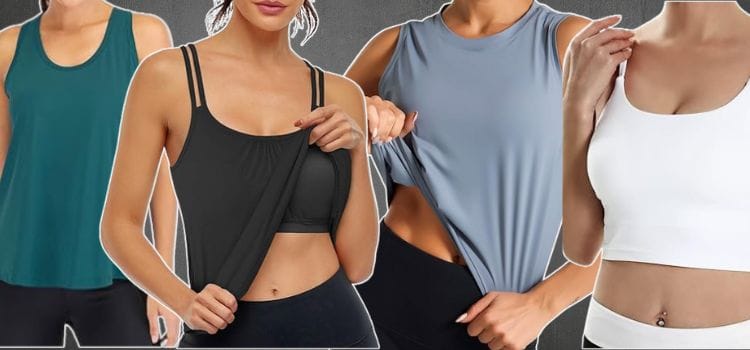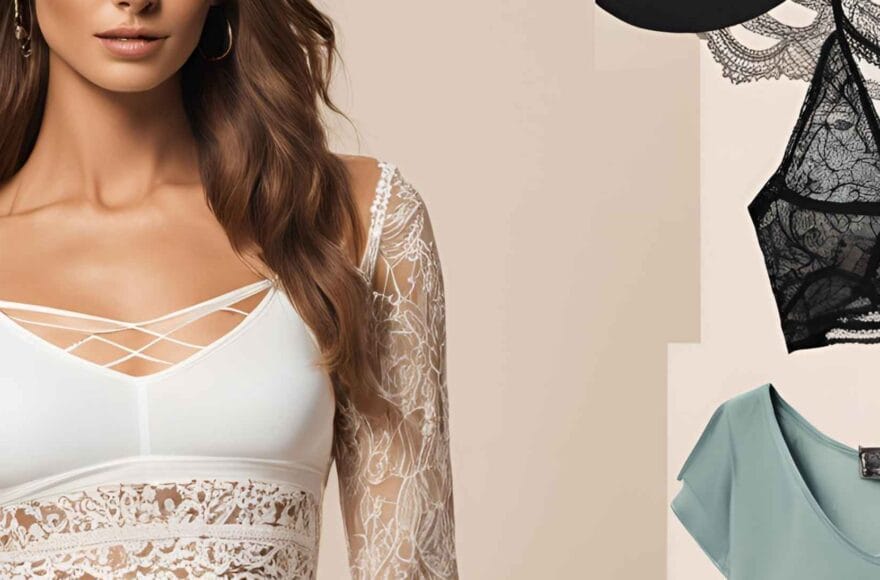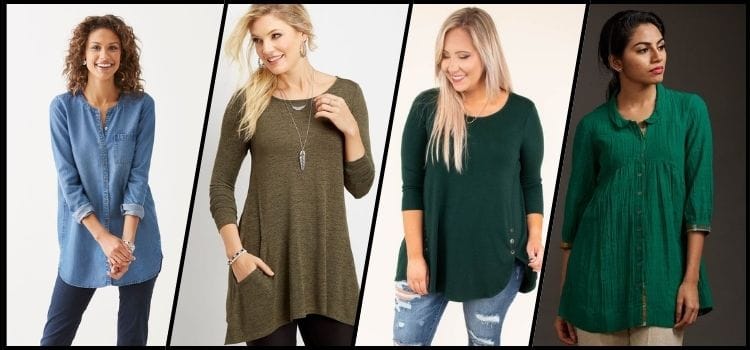Is Wearing Crop Tops a Sin? A Biblical Perspective for Today’s Christian

As an Amazon Associate, I earn from qualifying purchases
Is wearing crop tops a sin? As Christians navigating today’s fashion trends, we often find ourselves searching the Bible for specific rules about hemlines, necklines, and exposed midriffs.
Interestingly, the Bible doesn’t give us a catalog of divinely approved outfits or bathing suits. Scripture about modesty is surprisingly limited, with no specific rules about clothing choices. Instead, biblical modesty goes deeper than just our choice in clothes. While the Bible commands Christians to dress modestly and avoid drawing attention to our bodies in a sexual way, God’s Word ultimately points us toward something greater than a list of acceptable garments.
Rather than providing a checklist of appropriate attire, what does the Bible say about modesty? Christians have historically fallen into the trap of creating rules and regulations instead of advocating for a personal, trusting relationship with God. This approach misses the heart of what God says about modesty – that it’s not actually about the clothes themselves.
In this article, we’ll explore what the Bible teaches about modesty, examine when clothing becomes a heart issue, and discover how to make godly decisions about our wardrobes without falling into legalism. Ultimately, God wants us to put on the Lord Jesus in everything we do, including how we dress.
What does the Bible say about modesty?
The Bible doesn’t offer a detailed dress code or specific rules about crop tops, but it does provide clear principles about modesty that transcend cultural norms and fashion trends. These principles focus more on the heart attitude behind our clothing choices than on specific garments.
1. Key verses on modesty and clothing
Two passages stand out as foundational texts on biblical modesty. First, 1 Timothy 2:9-10 states: “I also want women to dress modestly, with decency and propriety, adorning themselves, not with elaborate hairstyles or gold or pearls or expensive clothes, but with good deeds, appropriate for women who profess godliness.“
Secondly, 1 Peter 3:3-4 teaches: “Your beauty should not come from outward adornment, such as elaborate hairstyles and the wearing of gold jewelry or fine clothes. Rather, it should be that of your inner self, the unfading beauty of a gentle and quiet spirit, which is of great worth in God’s sight.“
Both passages emphasize that modesty is less about specific clothing items and more about heart attitude. Additionally, these verses connect modesty with our relationship to God, suggesting that how we dress reflects our spiritual priorities.
2. Modesty in the Old and New Testament
In the Old Testament, modesty is often related to covering nakedness and shame following the Fall. Genesis 3:21 shows God making garments of skin for Adam and Eve, establishing the principle that clothing is meant to cover our bodies adequately.
The New Testament builds on this foundation but focuses more on the heart behind our clothing choices. The emphasis shifts from external rules to internal motivation. Consequently, Paul’s instructions in 1 Timothy link modesty with reverence for God: “At the core of dressing modestly is reverence for God. Rather than seek to garner attention through appearance, godly women are to seek to glorify God.”
Furthermore, the Bible teaches that our appearance communicates something to others. Modesty demonstrates that our worth is found in God, not in worldly status symbols or physical beauty. As Proverbs 31:30 reminds us, “Charm is deceptive, and beauty is fleeting, but a woman who fears the Lord is to be praised.“
3. What does the Bible say about showing off your body?
Scripture consistently teaches that our bodies are not meant for inappropriate display or sexual immorality. 1 Corinthians 6:19-20 declares: “Do you not know that your body is a temple of the Holy Spirit within you, whom you have from God? You are not your own, for you were bought with a price. So glorify God in your body.”
The Bible cautions against using our bodies to attract improper attention. Proverbs 7:10 describes a woman “dressed as a prostitute and sly of heart,” highlighting how certain clothing choices can reflect problematic motivations.
Moreover, 1 Thessalonians 4:3-5 instructs believers to “learn to control your own body in a way that is holy and honorable, not in passionate lust like the pagans.” This suggests that Christians should consider how their clothing might affect others, though without making women responsible for men’s lust.
Above all, Scripture emphasizes that our bodies are meant to honor God. Romans 12:1 calls us to “offer your bodies as a living sacrifice, holy and pleasing to God—this is your true and proper worship.” This principle guides all decisions about how we present ourselves, including our clothing choices.
Is wearing a crop top automatically immodest?
Image Source: Mama Bear Apologetics
Many Christians wonder if specific garments like crop tops are inherently sinful or immodest. The answer isn’t as straightforward as we might hope. Unlike some religious traditions with detailed dress codes, Christianity offers principles rather than specific clothing prohibitions or requirements.
1. Understanding cultural context
Modesty standards have always been culturally relative. What’s considered modest varies dramatically across different time periods, geographical locations, and social contexts. In some cultures, showing shoulders or knees might be taboo, while in others, those same expressions would be considered perfectly appropriate.
Throughout history, modesty in clothing has transcended mere fabric choices to become “a profound expression of self-respect and cultural values.” For many believers, modest clothing signifies “a connection with their faith, reflecting religious teachings that advocate humility and respect for one’s body.”
However, this cultural relativity doesn’t mean Christians should simply adopt whatever is culturally acceptable. First Timothy 2:9 encourages believers to dress in “respectable apparel,” which means clothing that is “becoming, congruous with, fitting to, and consistent with our character as children of God.”
2. The difference between sensuality and comfort
When evaluating whether a crop top or any garment is modest, understanding the distinction between sensuality and comfort is crucial.
Sensuality focuses on drawing attention to one’s body in a way that emphasizes sexuality. It “is all about sexual expression that typically involves physical contact and pleasure” and often centers on “the desire for sex.“
Comfort, meanwhile, involves wearing clothes that feel good against your skin and allow freedom of movement without necessarily drawing sexual attention. As one source explains, “The silks, velvets and cottons that I tend to use should feel like they are floating around the body, articulating the form sensually and languidly. So you have a feeling of grace and no restrictions in movement.”
With this distinction in mind, a crop top worn primarily for comfort during hot weather might not have the same heart motivation as one worn specifically to attract sexual attention.
3. When clothing becomes a heart issue
Ultimately, modesty is more about heart attitude than specific garments. As one author notes, “modesty has a lot more to do with the condition of our hearts than with the specifics of our wardrobes.”
When considering whether a crop top is appropriate, examining your motivation is essential. Ask yourself:
- Am I wearing this to attract inappropriate attention or simply because I like the style?
- What message might this send in this particular context?
- Is my identity rooted in Christ or in how others perceive my appearance?
For Christian women, clothing choices should reflect a heart that is focused on honoring God rather than drawing attention to oneself. “If we believe in Jesus and in what He did for us, then we shouldn’t want the focus to be on us. Instead, the focus should be on Christ.”
Nevertheless, this doesn’t mean Christians should create rigid dress codes. Rules without a relationship often lead to rebellion. Instead, believers should develop personal standards based on biblical principles, understanding that “the greatest sin of immodesty is that we’re saying ‘look at me’ instead of ‘look at God.'”
Regardless of what garment we’re discussing, Christians are called to “dress decently,” which means recognizing “that God ordained clothes to cover, and not draw attention to, our naked skin.”
How to examine your heart before choosing what to wear
The true test of modesty goes beyond the garment itself to the heart behind your clothing choices. Fashion expert John T. Molloy observed, “What you wear signals what you are. Your clothes speak a body language”. Examining your heart before choosing your outfit can reveal hidden motivations that might contradict your Christian values.
1. Are you seeking attention or expressing style?
Many Christians unknowingly dress to compensate for deeper insecurities. “Revealing apparel is a way to compensate for a lack of faith in what makes them truly beautiful”. In contrast, healthy modesty says, “I have something to keep private, not because I hate my body, but because the body God gave me is so good, beautiful, and pleasing that I’m not going to reveal it to everyone”.
Essentially, we must question whether we’re dressing for attention or self-expression. One woman confessed, “I continuously look for compliments, and when I do get one, my ego is fed. When I don’t get one, my ego craves attention”. Jesus warned that living for others’ approval represents one of the most deadly dispositions in the world. Before selecting an outfit, honestly assess: Are you seeking validation through your appearance, or expressing your personality within appropriate boundaries?
2. What message are you sending?
Your clothing communicates powerful messages about your values and character. “A person can convey the language of their soul through what they wear”. Presently, many fashion trends deliberately communicate messages that conflict with Christian values.
To clarify, clothing that overly accentuates or exposes the body often brings with it a moral judgment about a person’s character. Before wearing a crop top or any garment, ask yourself: “What do I want to say with my life?” and “Do the clothes I wear communicate the Biblical values that I seek to live by?”
3. Is your identity rooted in Christ or appearance?
Perhaps the most crucial question concerns where you find your worth. Beginning in my teen years, I also tied my identity to how I looked, what I ate, how much I exercised, and how everyone around me perceived me”. This approach invariably leads to disappointment since “your appearance will change as you get older”.
In contrast, “understanding your identity in God starts with understanding who He is, what He says about Himself, and what He says about you”. Your worth isn’t derived from your clothing or appearance, but from being “created uniquely and with intention”.
Upon deeper reflection, choosing what to wear becomes less about following rules and more about expressing who you are in Christ. “The key to our salvation is not when we do X amount of good deeds or when we finally have it all together. He says we’ll be saved when we believe in Him! And as saved people, we take on a whole new identity in Christ”.
Setting personal and family standards without legalism
Image Source: Abundant Life Church
Setting standards for modest dress requires wisdom, not rigid rules. As believers, many of us struggle with finding the balance between appropriate guidelines and legalistic demands that can damage our relationship with God and others.
1. Why standards are not the same as rules
Standards and rules differ fundamentally in their approach. Standards serve as “a basis for comparison; a reference point against which other things can be evaluated,” whereas rules function as rigid demands that often breed rebellion. The proper response to legalistic standards is not abandoning all standards—it’s establishing healthier ones based on biblical principles.
Having personal standards doesn’t mean you’re legalistic; rather, it acknowledges that “your heart is deceitful” and needs guardrails. These guardrails protect us from our tendency to rationalize choices that don’t honor God.
2. How to create healthy boundaries
Creating biblical boundaries starts with self-awareness. Reflect on your core values and what matters most to you spiritually. Ask yourself: “What does modesty look like in my specific cultural context?” and “How would faithful application of Scripture apply to my wardrobe choices?”
Healthy boundaries are specific, clearly communicated, and respectful. They protect both you and others. For example, instead of saying “I want to dress modestly,” you might specify “I choose not to wear clothing that draws attention to my body in a sexual way.”
Markedly, boundaries must evolve as culture changes. What remains constant are the biblical foundations, not the specific applications.
3. Involving parents or spouses in the conversation
Family standards work best when developed collaboratively. Parents, although you have final authority with your children, explain the reasoning behind your standards. Discuss what the Bible teaches about modesty, purity, and representing Christ.
Instead of simply saying “Because I said so,” ask questions like: “Why do you suppose I have objections to that outfit?” This approach helps children understand the heart behind the standards.
Couples should develop mutual respect around clothing choices. Prayerfully consider each other’s concerns, remembering that you represent not only yourself but your spouse and, most importantly, Christ.
Living as a representative of Christ in all things
As believers, the clothing conversation extends far beyond fashion choices to our fundamental identity as representatives of Christ. Our appearance communicates not just personal style but our relationship with God and understanding of our purpose.
1. Your body as a temple (1 Corinthians 6:19-20)
At the core of Christian modesty lies this profound truth: “Do you not know that your body is a temple of the Holy Spirit within you, whom you have from God? You are not your own, for you were bought with a price. So glorify God in your body” (1 Corinthians 6:19-20). This scripture reveals three life-changing realities:
First, God’s Spirit literally dwells within us. Second, we belong to God, purchased through Christ’s sacrifice. Third, therefore, our bodies should glorify Him. This transforms clothing decisions from merely personal choices to spiritual ones.
Primarily, this passage addresses sexual immorality, yet the principle extends to how we present ourselves. When considering crop tops or any attire, remember that your body is a sacred space, like “the ground on which Moses stood before the burning bush.”
2. Dressing with love for others in mind
Coupled with understanding our bodies as temples is recognizing we’re part of a community. “We don’t get dressed with an eye only to ourselves. We get dressed as people who belong to other people.” This perspective shifts our focus from individual rights to mutual care.
In light of this truth, we consider how our clothing might impact fellow believers. “We don’t want our clothing to be an occasion for jealousy or for lust.” This isn’t about blame but about loving others as Christ loves them.
3. Modesty as a form of worship
Ultimately, modesty becomes an act of worship—a way to honor God rather than draw attention to ourselves. “Spiritual adornment is the reality. Physical adornment is the symbol of that reality.”
On account of being “bought with a price,” our wardrobe choices become opportunities to express gratitude and submission to God. With this in mind, modesty isn’t about following rules but about letting our appearance reflect hearts transformed by Christ’s love.
Conclusion
Throughout this exploration of modesty and crop tops, we’ve discovered that the Bible offers principles rather than a specific dress code. The question “Is wearing a crop top a sin?” actually points us toward a deeper examination of our hearts rather than our hemlines. God cares far more about our motivations than our measurements.
First and foremost, modesty transcends cultural norms and specific garments. What appears modest in one context might seem inappropriate in another. Therefore, Christians must develop discernment rather than rely on rigid rules about specific clothing items.
Additionally, our clothing choices reflect our identity in Christ. When we understand ourselves as temples of the Holy Spirit, purchased at a price, our wardrobes become expressions of worship rather than merely fashion statements. This perspective shifts the focus from “Can I wear this?” to “Should I wear this as someone who represents Jesus?”
The heart behind our choices matters tremendously. Before selecting an outfit, we should ask: Am I seeking attention or expressing style? What message does this send? Does this reflect my identity in Christ? These questions help us move beyond legalism toward a genuine desire to honor God with our bodies.
Parents and spouses can establish healthy standards without imposing legalistic rules. Communication, mutual respect, and biblical principles create guardrails that protect without stifling personal expression.
After all, Christianity isn’t about following a detailed dress code but about allowing Christ to transform every aspect of our lives—including how we dress. Though crop tops themselves aren’t inherently sinful, the motivations behind wearing them deserve thoughtful consideration.
God ultimately desires our hearts, not just our hemlines. When we prioritize pleasing Him above seeking attention or validation from others, our clothing choices naturally align with biblical modesty. This approach frees us from both legalism and worldliness, allowing us to represent Christ authentically in everything—even our wardrobes.
FAQs
Is wearing crop tops considered sinful for Christians?
Wearing crop tops is not inherently sinful. The Bible doesn’t provide specific rules about clothing items. Instead, it emphasizes modesty and dressing in a way that honors God. The appropriateness of crop tops depends on personal convictions, cultural context, and the wearer’s intentions.
How can Christians make decisions about modest clothing?
Christians can make clothing decisions by examining their hearts and motivations. Consider whether you’re seeking attention or expressing style, what message your clothing sends, and if your choices reflect your identity in Christ. Pray for guidance and wisdom in aligning your wardrobe with biblical principles.
Does the Bible provide specific guidelines on how much skin can be shown?
The Bible doesn’t give exact measurements for appropriate clothing. It does encourage modesty and dressing in a way that doesn’t cause others to stumble. The focus is more on the heart attitude behind clothing choices rather than specific garments or amounts of skin shown.
How can parents set standards for modest dress without being legalistic?
Parents can establish healthy standards by communicating openly, explaining the reasoning behind guidelines, and focusing on biblical principles rather than rigid rules. Involve children in discussions about modesty and help them understand the importance of honoring God with their bodies.
Can Christians wear fashionable clothing while still maintaining modesty?
Yes, Christians can be fashionable while maintaining modesty. The key is to prioritize honoring God and respecting others in your clothing choices. Consider the context, your personal convictions, and how your appearance might impact others. Modesty is more about the heart attitude than following specific fashion trends.
As an Amazon Associate, I earn from qualifying purchases









